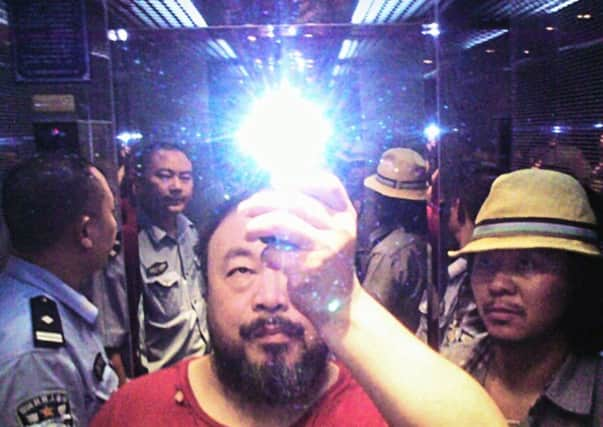Art review: Facing The World / The Taylor Wessing Prize


Indeed, the whole exercise is supremely reassuring for anyone suffering from anxieties that the modern world has descended into a narcissistic pool of pouting self-obsessives. For the selfie is more than 600 years old. It first appeared in the hands of the expert goldsmiths and medal-makers of the Middle Ages and Renaissance. Facial expressions, coded hand gestures, smouldering glances and pouts abound. Artists’ self-portraiture is just as reliant on exaggeration, cliché and stereotype as your Facebook feed. It is just that technology has changed and their skills and storytelling are often infinitely more sophisticated.
Facing The World ****
Taylor Wessing Photographic Portrait Prize 2015 ***
Scottish National Portrait Gallery, Edinburgh
Take Rembrandt. We now see his many painted self-portraits as supremely-skilled self-revelation. The Scottish National Gallery is lucky enough to have on long-term loan a superb late image of the artist, rheumy-eyed and wrinkled at a time of despondency and bankruptcy, which seems to tell us every truth about him. But the series of etchings on display in this exhibition tell a more complicated story: for here is Rembrandt as a street beggar, as an “oriental potentate” and in a fine array of caps and berets. Such images were aimed at the art market and may have been “tronies”, images of types and stereotypes that audiences would recognise from art, literature and lore. They are as staged as Taylor Swift’s Instagram account, but the cumulative effect is of an artist exploring his own ageing and ever-changing face with a knowing rigor that amounts to self-interrogation.
Advertisement
Hide AdAdvertisement
Hide AdWhy make self-images? As a signature, as a marketing tool, as a tribute to a rich patron who likes the idea he hangs out with artists. There is a whole subset of images in which artist self-portraits are sneaked into other genres, like the wonderful 17th century still life image by Jacob Marrell that shows the artist himself with paintbrush in hand, as a tiny, barely perceptible reflection in a glass bowl. Then there’s Matisse’s cartoonish drawing of himself: a painting of a painter making a painting of a painting lesson. In 1919, it’s as conceptual and as meta as anything on Twitter.
Then there are the self-portraits in which the idea of the artist as a special person, as a social outsider prone to genius or melancholy, parallels the wider interest in self-examination in all art forms. Here one longs for a better Courbet than the decent one on show, Lovers in the Country, which shows the artist in a moody and ill-fated grapple with Virginie Binet, who would eventually leave him.
Self-portraits, contrary to their rather staid reputation, are a supreme vehicle for testing out the frontiers of artistic practice. Take Cecile Walton’s Romance, a 1920 image of the artist in the moments after childbirth. If the painting itself is placid, the scene is one of taboo-breaking intimacy. Or a picture from an earlier era: Ernst Ludwig Kirchner’s self-portraits as a green-gilled introvert suffering extreme anxiety in the years after the First World War.
There are more recent experiments too – a series of Andy Warhol Polaroids showing the artist in wigs or drag, looking characteristically and studiously blank or haunted by a dark shadow that might indicate death or interior life. That shadow behind him in a 1981 Polaroid is a direct descendant of a fine romantic painting like Hans Thoma’s 1875 self-portrait that features a skeleton leering over the artist’s shoulder. Warhol would have loved selfies, but like many of these artists he was also acknowledging ancient traditions.
The Taylor Wessing Photographic Portrait Prize 2015 is the latest instalment of an annual show telling us where photographic portraiture is now. Its new emphasis, on bodies of work rather than single images, means it leans more heavily
towards documentary photography and to cohesive artistic projects than to the persistent idea that you can capture a person or an idea in a single snap.
There are strong works in this tradition, like Joey Lawrence’s Guerilla Fighters of Kurdistan or Adrian Peacock’s series of Policewomen. Thankfully there are fewer celebrity portraits, but of these my favourite is a photo of artistic provocateurs Gilbert and George from the back, placing emphasis on their bald spots and monk-like tonsures. It defies the truism that you can tell something about the sitter from their facial features and you can’t help but suspect this is a collaborative achievement. It might fit just as well in the gallery up the stairs. n
Facing The World until 16 October; Taylor Wessing until 2 October